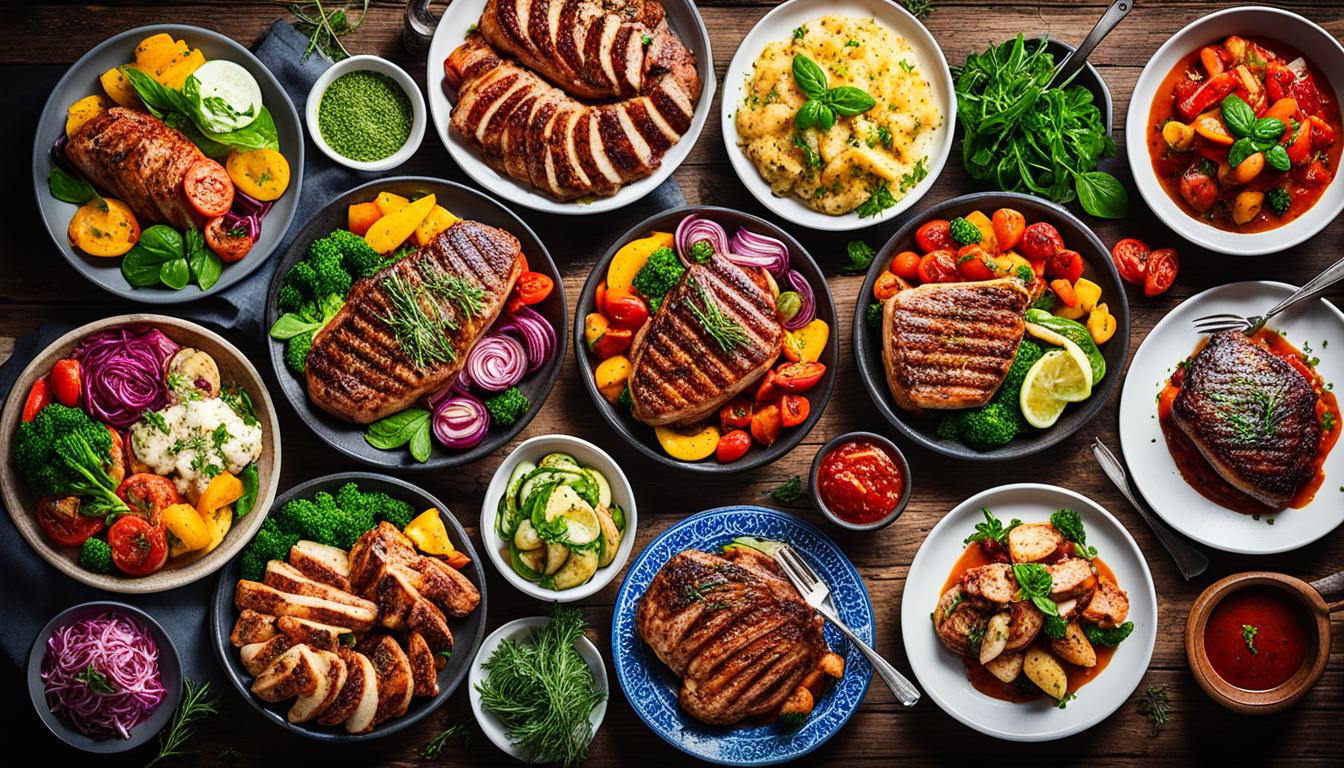How to Lose 20 Pounds in a Month Naturally

Losing weight is a common goal for many, but the challenge is often in finding a sustainable, healthy way to achieve it. The idea of lose 20 pounds in a month might seem daunting, but with the right approach, it can be done naturally and safely. This guide will take you through the necessary steps to lose weight effectively while maintaining your health and well-being.
Understanding Weight Loss
Weight loss fundamentally comes down to a simple equation: calories in versus calories out. When you consume fewer calories than your body needs to maintain its current weight, you create a calorie deficit, leading to weight loss. However, this simplistic view doesn’t account for the complexities of human metabolism, lifestyle, and dietary habits.
1. Metabolism and Weight Loss
Your metabolism is the process by which your body converts what you eat and drink into energy. Even at rest, your body needs energy for functions such as breathing, circulating blood, and cell repair. The number of calories your body uses to carry out these basic functions is known as your basal metabolic rate (BMR).
Several factors affect your BMR, including age, sex, body composition, and activity level. Men typically have a higher BMR than women because they have more muscle mass. As you age, your BMR decreases, making it easier to gain weight.
2. The Importance of a Balanced Diet and Regular Exercise
A balanced diet provides the nutrients your body needs to work effectively. Without balanced nutrition, your body is more prone to disease, infection, fatigue, and poor performance. Regular exercise helps control your weight, reduces your risk of cardiovascular disease, strengthens your bones and muscles, and improves your mental health and mood.
Creating a Plan
Setting realistic goals is crucial for weight loss. Losing 20 pounds in a month is an ambitious goal, but it’s possible with a disciplined approach. Here’s how to create a plan that works:
1. Setting Realistic Goals
Your goal should be specific, measurable, attainable, relevant, and time-bound (SMART). For example, “I want to lose 20 pounds in 30 days by following a healthy diet and exercise plan.”
2. Designing a Diet Plan
A diet plan for weight loss should include nutrient-dense foods that keep you full longer and provide the necessary vitamins and minerals. Avoid fad diets that promise quick results but are unsustainable and unhealthy in the long term.
3. Incorporating Exercise Routines
Exercise is crucial for burning calories and building muscle. A combination of cardiovascular exercises and strength training is the most effective for weight loss. Cardio exercises help burn calories, while strength training builds muscle, which in turn increases your BMR.
Dietary Changes
Diet plays a significant role in weight loss. Here’s how to make effective dietary changes:
1. Foods to Include
- Lean Proteins: Chicken, turkey, fish, tofu, legumes, and low-fat dairy.
- Vegetables: Leafy greens, broccoli, cauliflower, bell peppers, carrots.
- Fruits: Berries, apples, oranges, bananas, and other fiber-rich fruits.
- Whole Grains: Quinoa, brown rice, oats, whole wheat pasta.
- Healthy Fats: Avocados, nuts, seeds, olive oil.
2. Foods to Avoid
- Processed Foods: Chips, cookies, cakes, and sugary cereals.
- Sugary Drinks: Sodas, energy drinks, and fruit juices with added sugar.
- Refined Carbs: White bread, pastries, and other refined grain products.
3. Sample Meal Plans and Recipes
Here are some meal ideas to get you started:
Breakfast:
- Greek yogurt with fresh berries and a sprinkle of granola.
- Scrambled eggs with spinach and tomatoes on whole-grain toast.
Lunch:
- Grilled chicken salad with mixed greens, cherry tomatoes, cucumbers, and olive oil dressing.
- Quinoa bowl with black beans, corn, avocado, and salsa.
Dinner:
- Baked salmon with steamed broccoli and quinoa.
- Stir-fried tofu with mixed vegetables and brown rice.
Snacks:
- Apple slices with almond butter.
- Carrot sticks with hummus.
Exercise Routine
A consistent exercise routine will help you burn calories and build muscle, crucial for weight loss. Here’s how to structure your workouts:
1. Importance of Combining Cardio and Strength Training
Cardiovascular exercises such as running, cycling, and swimming help you burn calories. Strength training exercises such as weight lifting, bodyweight exercises, and resistance bands help you build muscle, which increases your metabolism.
2. Suggested Workouts
Cardio:
- High-Intensity Interval Training (HIIT): Short bursts of intense exercise followed by low-intensity recovery periods.
- Running: Aim for at least 30 minutes a day, varying the intensity and terrain.
Strength Training:
- Bodyweight Exercises: Push-ups, squats, lunges, and planks.
- Weight Lifting: Start with lighter weights and gradually increase the weight as you build strength.
3. Daily Exercise Schedule
Here’s a sample weekly exercise plan:
Monday:
- 30 minutes of HIIT
- 20 minutes of strength training (upper body)
Tuesday:
- 45 minutes of moderate-intensity cardio (running or cycling)
Wednesday:
- 30 minutes of HIIT
- 20 minutes of strength training (lower body)
Thursday:
- 45 minutes of moderate-intensity cardio
Friday:
- 30 minutes of HIIT
- 20 minutes of strength training (full body)
Saturday:
- 1-hour long walk or hike
Sunday:
- Rest or light activity like yoga
How many calories should I eat a day to lose 20 pounds in a month?
Losing 20 pounds in a month is an ambitious goal and requires a significant calorie deficit. On average, one pound of body weight is equivalent to approximately 3,500 calories. Therefore, to lose 20 pounds, you would need to create a total calorie deficit of about 70,000 calories over the month.
To determine your daily calorie intake for this weight loss, you need to calculate your Total Daily Energy Expenditure (TDEE), which is the number of calories your body needs to maintain its current weight. TDEE takes into account your Basal Metabolic Rate (BMR) and your level of physical activity. You can estimate your BMR using various online calculators or formulas such as the Harris-Benedict equation, which considers your age, gender, weight, and height.
Once you have your TDEE, you need to create a calorie deficit. For significant weight loss like 20 pounds in a month, you would need to aim for a daily calorie deficit of around 2,333 calories (70,000 calories divided by 30 days). However, it’s crucial to note that creating such a large deficit is not recommended for most people due to the risks of nutrient deficiencies, muscle loss, and other health issues.
A more sustainable and healthier approach would be to aim for a calorie deficit of 500 to 1,000 calories per day, leading to a weight loss of 1 to 2 pounds per week. For a more aggressive plan under medical supervision, you might consider a deficit of up to 1,500 calories per day.
For example, if your TDEE is 2,500 calories per day, a 1,500-calorie deficit would allow you to consume 1,000 calories per day, which is extremely low and should only be done under professional guidance.
In conclusion, while it’s theoretically possible to lose 20 pounds in a month by drastically reducing your calorie intake, it’s not advisable due to the potential health risks. A more gradual approach with a balanced diet and regular exercise is the safest and most effective way to achieve long-term weight loss. Always consult with a healthcare professional before starting any extreme diet or weight loss plan.
Staying Motivated
Staying motivated throughout your weight loss journey is essential. Here are some tips to keep you on track:
1. Tips for Maintaining Motivation
- Set Mini-Goals: Break your overall goal into smaller, more manageable milestones.
- Celebrate Progress: Reward yourself for achieving these milestones (not with food).
- Find a Support System: Share your journey with friends, family, or join a weight loss group.
2. Tracking Progress
Use a journal or an app to track your food intake, exercise, and weight loss progress. Seeing your progress in black and white can be a great motivator.
3. Dealing with Setbacks
Everyone experiences setbacks. The key is not to let them derail your efforts. If you have a bad day, don’t give up. Learn from it and move on.
Conclusion
Losing 20 pounds in a month naturally is a challenging but achievable goal. By understanding the principles of weight loss, creating a realistic plan, making dietary changes, incorporating regular exercise, and staying motivated, you can reach your goal. Remember, the most important aspect of any weight loss journey is to maintain a healthy lifestyle that you can sustain in the long run. Good luck!
People also read : How many calories should I eat a day to lose 20 pounds in a month?

